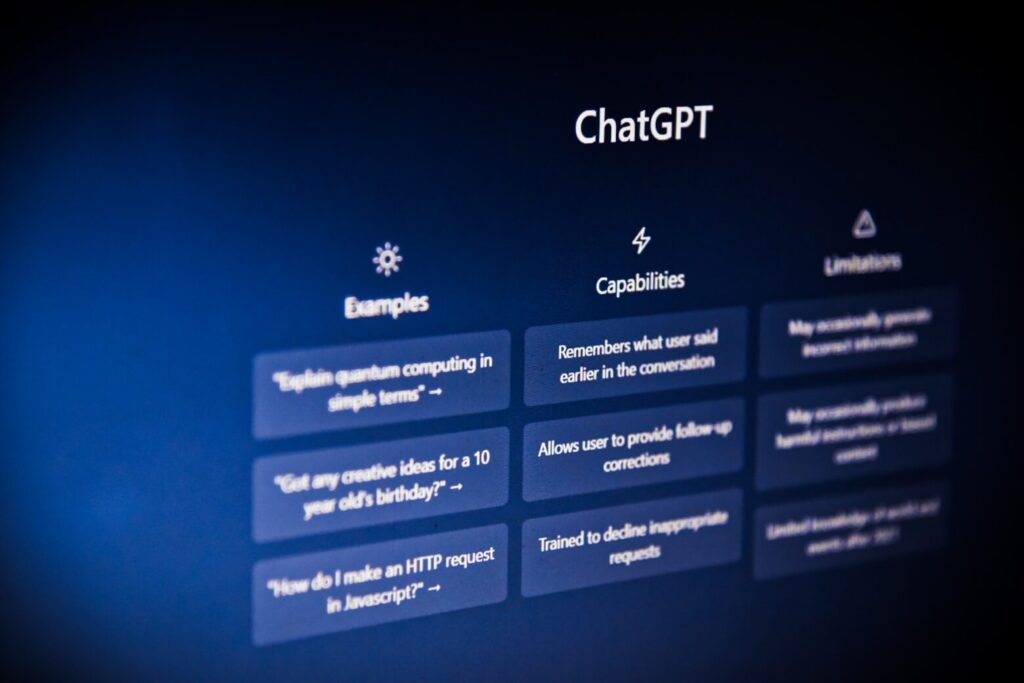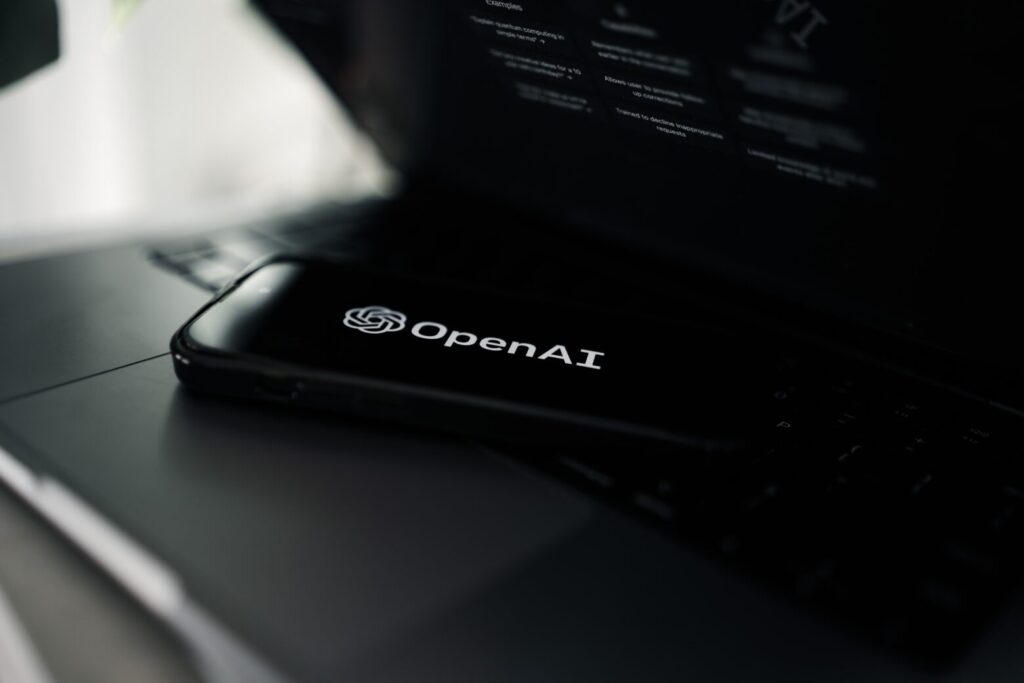Understanding the Hype of ChatGPT: An In-Depth Look at the AI-Powered Chatbot Revolution

Since it was revealed to the public in November 2022, ChatGPT got massive attention. In just 5 days it reached 1 million users, a number that took Netflix 41 months to achieve. But what is it really – a new era of artificial intelligence, or technological hype? Here we’ll explain what Chat GPT actually is, how it works, and can it replace people at their workplaces in the near future?
What is Chat GPT?
ChatGPT is a highly advanced AI technology that enables the creation of chatbots capable of conducting natural, human-like conversations and providing answers to questions or prompts. It is a variation of the GPT language model, specifically tailored for chatbot applications. The acronym “GPT” stands for Generative Pretrained Transformer.
ChatGPT utilizes AI to generate responses to user input, mimicking a conversational style. It’s capable of maintaining context and engaging in extended dialogues, making it a versatile tool for various applications.
Experts view the release of ChatGPT as an “iPhone moment” for AI, a turning point similar to the impact that the iPhone had on smartphones when it was released in 2007. The potential of machine learning is becoming more widely recognized, and ChatGPT has the possibility to revolutionize the field in the same way that the iPhone revolutionized the smartphone industry.
What can it do?
ChatGPT can perform a variety of text-related tasks. Some of its key capabilities include:
- Text generation: ChatGPT can create meaningful, unique texts based on user requests. It takes into account the context and history of the conversation, so you can teach the AI about your company or the specifics of your task before asking it to provide the final result. Variations of texts that can be generated using a chatbot are amazing. You can generate text for an article or a post on social networks, create a business plan or a pitch presentation to investors, form legal documents, poems, song lyrics, scripts for films, and much more.
- Language translation: ChatGPT can translate text from one language to another, providing accurate translations in real-time. For organizations that work all over the world or communicate with customers and partners in different languages, this can be a valuable tool.
- Text summarization: ChatGPT can summarize lengthy texts into brief, concise summaries that retain the key information and ideas.
- Sentiment analysis: ChatGPT can determine whether the text is positive, negative, or neutral. This can be leveraged for monitoring brand sentiment, gauging public opinion, and understanding customer feedback.
- Programming: ChatGPT can understand programming code – search for bugs and optimize code, program in various languages, work with databases and SQL requests, solve mathematical problems, make front-end layouts, and much more.
- Create images with the help of other AIs: ChatGPT does not yet know how to create visual content but can become a valuable assistant to prepare the right prompt for another AI tool to get the desired result.

How can ChatGPT be used for business?
ChatGPT can be applied in various business settings, offering a range of benefits to organizations, such as:
Content Generation
Marketers around the world are embracing the capabilities of ChatGPT to create content. With the help of a chat, you can create large articles, generate a series of posts for social networks or newsletters, write meta-tags for SEO optimization, and so on. AI can help overcome a clean sheet barrier, providing you with ideas for creative headlines or generating an outline on a given topic, or it can completely write the material for you, adding details you may not have thought of. You can ask the chat to add a quote, refer to research, use a metaphor, address a special audience, and much more, depending on what task you ask it to solve.
Customer service chatbots
ChatGPT can be used to build conversational chatbots that can assist customers with their queries, providing prompt and reasonably accurate answers 24/7. This can help businesses to improve customer satisfaction, reduce response times, and lower operational costs. According to studies, 74% of internet users prefer using chatbots when looking for answers to simple questions, and 64% claim that 24/7/356 service is the most useful chatbot functionality.
Virtual assistants
ChatGPT can be integrated into virtual assistants, providing users with personalized, conversational interfaces that can help them manage their daily tasks, schedule appointments, and access information. With this, businesses can enhance their offerings, improve customer engagement, and increase productivity.
Online Education
ChatGPT can be used to develop conversational AI-powered tutors and educational assistants, providing students with personalized, interactive learning experiences. This can help education providers to improve learning outcomes, increase student engagement, and reduce dropout rates.
Social media
ChatGPT can be integrated into social media platforms, enabling businesses to monitor and analyze social media conversations, measure brand sentiment, and engage with customers and followers in real time.
Overall, ChatGPT offers a range of benefits to businesses, helping them to improve customer service, enhance their offerings, and increase operational efficiency.
Who created ChatGPT and how does it work?
ChatGPT was developed by OpenAI, a leading AI research institute. It uses a deep learning approach based on the transformer architecture to generate natural language responses to user inputs.
The training process for ChatGPT involves exposing the model to large amounts of text data from various sources, such as books, articles, and websites. This allows the model to learn patterns and relationships between words and sentences, enabling it to generate human-like responses to new prompts.
According to Stanford University, GPT-3 has 175 billion parameters and was trained on 570 gigabytes of text. For comparison, its predecessor, GPT-2, was over 100 times smaller at 1.5 billion parameters.

Transfer Learning Technique
ChatGPT uses a technique called transfer learning, which allows it to fine-tune its performance on specific tasks, such as answering questions or generating summaries, using much smaller amounts of data.
The model is primarily trained using supervised learning, a type of machine learning where the model is trained on labeled data and receives explicit feedback on the accuracy of its predictions. During the training process, ChatGPT is exposed to large amounts of text data, along with the corresponding correct responses. The model uses this data to learn how to generate appropriate responses to given prompts.
In addition to supervised learning, ChatGPT is also fine-tuned using reinforcement learning, a type of machine learning that uses trial and error to learn from its mistakes. In reinforcement learning, the model receives a reward signal for taking actions that lead to positive outcomes, such as generating accurate or helpful responses to user inputs.
By combining these two approaches to training, ChatGPT quickly increases its performance on specific tasks, such as customer service or online education, studying both explicit feedback and the consequences of its actions. This makes it very adaptable and capable of quickly studying new tasks and conversational styles.
Are there any other models like ChatGPT?
Several language models of AI have appeared in recent years, each with its strengths and weaknesses. Some notable examples include:
BERT: developed by Google, BERT is a pre-trained language model that was learning on a huge volume of text data, which made it capable of understanding the context and meaning of words in sentences.
ELMo: developed by the Allen Artificial Intelligence Institute, ELMo is a deep contextualized model of representations of words, which reflects both the syntax and the semantics of words in the sentence.
ULMFiT: developed by fast.ai, ULMFiT is a transfer learning approach for NLP ( Natural Language Processing) that allows pre-trained models to be fine-tuned for specific tasks with limited amounts of task-specific data.
Each of these models has its unique strengths and weaknesses, and the best model for a specific task will depend on specific requirements, such as the sum and type of available data and the desired output. However, all these models demonstrate the growing potential of language models and their ability to revolutionize the NLP area.
Will ChatGPT replace people?
ChatGPT and other AI language models are not intended to replace human workers. The goal of these tools is to help people in their daily work. Models like ChatGPT can perform repeating, laborious time-consuming tasks, or jobs that require a high degree of accuracy. By automating these routines, people can focus on things that require creativity, empathy, and critical thinking.
ChatGPT is designed to help and improve our human capabilities, not replace them. For example, ChatGPT can process simple requests in customer service and provide quick and accurate answers, allowing human representatives in customer service to focus on more complex or nuanced client questions.
In online education, ChatGPT can provide students with instant feedback and guidance, freeing up teachers to focus on more meaningful and engaging parts of learning.
In essence, ChatGPT and other AI language models are tools designed to make human work more fulfilling, creative, and impactful. They are not intended to replace human workers, but to enhance their abilities and help them focus on the most important and valuable aspects of their work.
Weaknesses of ChatGPT
While ChatGPT and other AI language models have many strengths and benefits, they also have several weaknesses that must be considered.
One of the main limitations of ChatGPT and similar models is their reliance on pre-existing data. ChatGPT can only provide information that was present in its training data, which can lead to the generation of outdated or inaccurate information. This makes it challenging to use ChatGPT for real-time information or tasks that require up-to-date knowledge. The technical term in computer sciences is known as, “GIGO” or garbage in, garbage out.
Another issue with AI language models like ChatGPT is the potential for biases to be present in the training data. If the training data contains biases, such as gender or racial biases, then the AI language model will likely reproduce these biases in its generated text. This can lead to unethical and harmful outcomes, such as the generation of offensive or inappropriate content.
Finally, the use of AI and ChatGPT raises important ethical questions and considerations. For example, how can we ensure that AI language models are used responsibly and ethically, and what steps should be taken to mitigate the potential risks and negative consequences of AI? These are critical questions that must be considered as AI continues to advance and become more widely used.
How does ChatGPT handle ethics?
Handling ethics is a crucial aspect of using any AI language model. OpenAI, the creators of ChatGPT, have taken steps to address ethical concerns by incorporating responsible AI principles into developing and using ChatGPT. Their ethical guidelines include considerations such as avoiding harmful content, promoting transparency and accountability, and ensuring that their models are used equitably and responsibly.
In addition, OpenAI has implemented technical measures to mitigate potential risks and biases in the generated text. For instance, they have implemented systems to detect and remove harmful or inappropriate content, and they have worked to increase the diversity of the training data to reduce the potential for biases in the generated text.
ChatGPT Monetization and Funding
ChatGPT is currently available for free, all you need is to access the chat from a country supported by the tool. Shortly after the public launch, OpenAI also introduced a paid subscription that allows users to get more responses, have priority access (free users often encounter an error when the server load is high), and have faster response rates.
The first test group of users was positive about the subscription features but considered the price too high (about $40 per month). OpenAI listened to these comments and now paid ChatGPT subscription is available for $20 per month.
In addition, the development of the GPT-4 model is actively supported and receives investment from Microsoft. The specific amounts of transactions are not disclosed, but we are talking about billions of dollars.
Why does Microsoft need ChatGPT?
Initially, there was a lot of talk about plans to include the capabilities of GPT-4 in the Bing search engine, owned by Microsoft, but until recently, not a serious competitor to Google. It is too early to talk about large-scale changes in the market, but some experts believe that this move could justify itself and become a significant threat to the search engine leader.
Recently Microsoft announced the introduction of Copilot – an AI assistant based on the GPT-4 model – to the Microsoft 365 apps. Copilot can become a game changer for the AI tools market, as this AI assistant combines the capabilities of different solutions and is embedded in the software that we have used for years. With the formats, we store our data and the interface which we can recall with closed eyes.
Copilot is adding support for AI-assisted content creation to Microsoft Word. Excel users will be assisted by AI in data analysis and visualization creation. With PowerPoint, Copilot can build beautiful, compelling presentations from your other documents in minutes. For the Teams video communication platform, Copilot will be able to take notes of the key moments of your calls, and in Outlook summarize long correspondence, significantly saving users time.
With the announcement of Copilot, long-time users of Microsoft products remembered the Clipper Assistant with nostalgia. Copilot, of course, will be an assistant of a completely different level, and most likely we will still see the development of its capabilities, but for today they already look very impressive.
What’s next?
ChatGPT has proven to be a powerful and innovative AI tool with a wide range of applications in various industries. From customer service chatbots, virtual assistants, and online education, to social media and content creation, it has the potential to greatly enhance and streamline various business processes.
The First Line Software team is already exploring ways to leverage ChatGPT for our clients’ needs and services, and we believe it can bring substantial value to businesses looking to stay ahead in the ever-evolving digital landscape.
If you’re interested in learning more about how ChatGPT can benefit your business, we invite you to get in touch with our experts and start a conversation about the possibilities of AI & ML for your business.
